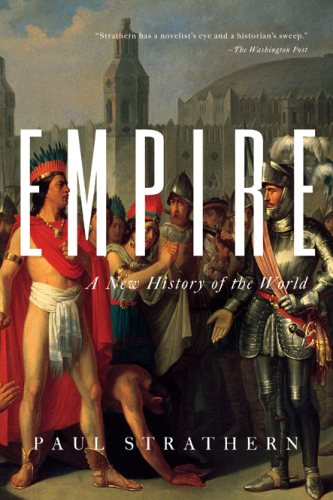
Empire
کتاب های مرتبط
- اطلاعات
- نقد و بررسی
- دیدگاه کاربران
نقد و بررسی

February 1, 2020
The author of The Medici (2016) and The Borgias (2019) tackles in 10 breezy chapters (one per empire) the immodest task of briefly recapitulating the history of the world. The Akkadian is followed by the Roman Empire, about which Strathern seems ambivalent. This is followed by the Ummayad and Abassid (Islamic) Caliphates, following the birth of Muhammad in the sixth century. Despite the division between Shiites and Sunnis, the effects of which are still manifest, this was a period of extraordinary discoveries in the sciences. It was followed by the brutal Khans?from Genghis to Kublai?and the Yuan in what is today China. Through a process that Strathern dubs sideways history, there were simultaneous notable advances in currency (paper money), art, and armaments. The Aztec Empire importantly introduced corn (maize) as a crop, and the last old style empire, the Ottoman, made further advances in food preparation and architecture. He concludes with the British Empire (and its role in the expansion of slavery), the Russian Empire, and the period of American preeminence, about which he is playful though cautious. A valuable overview emphasizing the ebb and flow of history.(Reprinted with permission of Booklist, copyright 2020, American Library Association.)

























دیدگاه کاربران